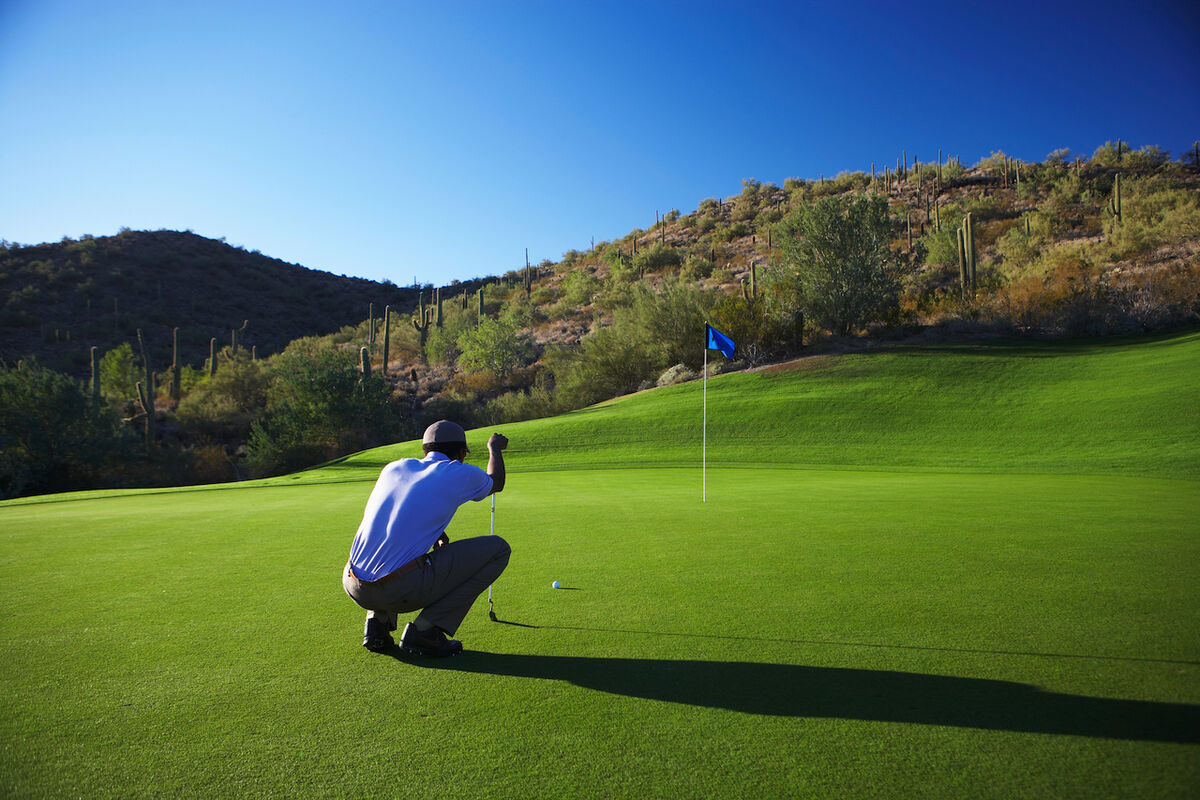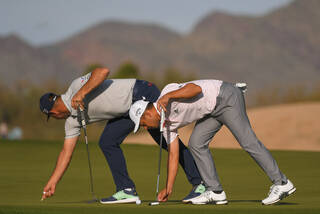8 Putting Green Rules Every Golfer Should Know

In a typical round of golf, you and your foursome can find yourselves all over the course depending on how well everyone is playing. While you might take different paths to get there, it all ends on the putting green.
Making sure that you use proper etiquette on the green is important, but you also want to be sure you’re following the rules of golf. It can be the difference between you closing out a match or having to settle a bet.
Here are some of the specific rules in place just for the putting green according to the USGA’s Rules of Golf.
1. Putting Order
Players should putt in order of farthest to closest from the hole. If you’re playing a more casual round with friends and everyone agrees on playing ready golf, there’s nothing wrong with that. In fact, it keeps your group moving along with the course’s pace of play.
If your first putt results in an easy tap-in or just a short one to clean up, you may ask your partners for permission to finish first to help speed things up as well.
2. Green vs. Fringe
Players who are new to the game might not realize that a ball on the fringe is technically not on the green. When you are on the fringe, you are not entitled to some of the benefits you receive for being on the green, including the ability to mark, lift and clean your golf ball.
3. Marking, Lifting, Cleaning
Properly marking your golf ball when it’s on the green can feel very technical in the early stages of playing but becomes second nature as your game progresses.
A ball-marker should always be placed directly behind the golf ball before you pick it up. Once your marker is down you are free to clean your golf ball. When placing your ball back down on the green it needs to be fully at rest before removing the marker behind it. As Lexi Thompson learned the hard way, you must replace your ball exactly where it was marked.
Once a player marks their spot on the green, they own that spot. If, after replacing their ball, the ball moves by no fault of the player, they are entitled to replace it at no penalty. If you watch enough golf on TV, you'll sometimes hear the broadcasters say "he better go mark that quickly" after a ball nervously comes to rest on a sloped green. If the ball rolls down the slope before it is marked, its next resting point becomes its location. However, if the player marks the ball, they are entitled to play their next shot from that spot.
4. Improvements
The putting green is the only area of the golf course where you can move loose impediments from around your golf ball. This includes leaves, sand, and dirt that can impede your ball’s path to the hole.
Players are also free to fix any ball marks on the green, and common courtesy includes fixing your own. Ball marks in line from your ball to the hole can be fixed with a repair tool, tee, etc. but no improvements can be made beyond normal repair.

How To Repair a Divot on the Putting Green
5. If Your Golf Ball Moves
If your ball is on the green and moves due to a natural occurrence, such as a gust of wind, you are allowed to move the ball back to its original spot without penalty. There is also no penalty if you accidentally cause your ball to move on the putting green, simply replace the ball to where it was before making your stroke.
6. Testing of Greens
Players are not allowed to test greens, even if your golf ball is marked. The only exception is if the hole has already been completed by the entire group.
7. The Flag Stick
In 2019, the USGA began allowing players to leave the flagstick in while putting. However, if somebody is tending the flag for you, they must remove it. If the stick is being tended, you are still on the hook for a penalty if your ball hits it as it drops in the hole.
8. The Waiting Game
If your birdie putt decides to simply hang on the lip of the hole, all hope is not lost. You are allowed a “reasonable” amount of time to walk to the hole plus an additional 10 seconds to see if the putt tips in. You are not allowed to jump up and down or create a breeze to guide the ball into the hole. If the ball doesn’t go in, that extra centimeter still counts as a stroke.